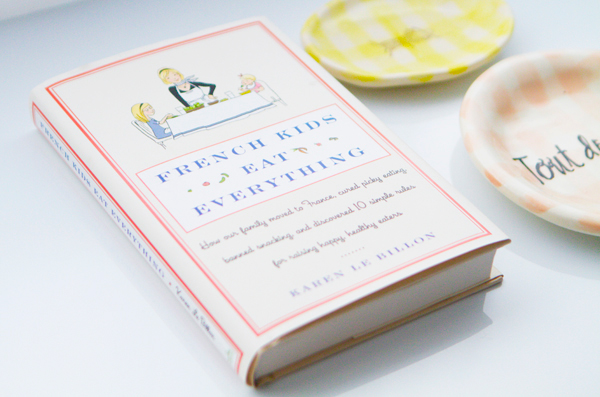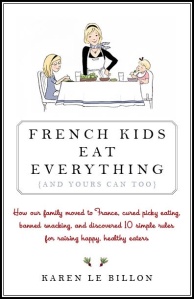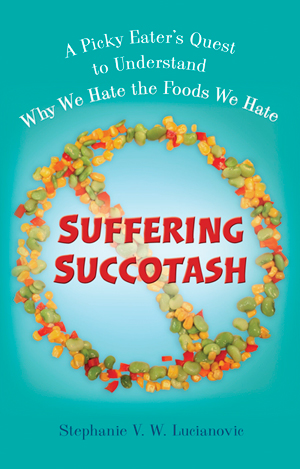by Tolly Wright
When I was growing up, my mother loved to cook, my father loved restaurants, and I loved buttered noodles.
While single and in her 30s, my mother discovered the Joy of Cooking (both the sentiment and the book). A decade later, by the time I was cognizant, she had a bookshelf as tall at the ceiling filled with cookbooks. She found excitement in discovering new recipes and would jump at any bit of food writing in The New Yorker or Southern Living.
She particularly took care to prepare great dishes for the few nights a week when her stepdaughters (my half sisters) would join us for supper. She’d spend hours in the kitchen: marinating meats, chopping salads, and doing whatever it is cooks do on counter tops. I, meanwhile, stayed planted firmly in my place adjacent to the kitchen in front of the television. On a Tuesday night, had I not been so entranced by a rerun of Full House, I might have seen my mother preparing crab imperial served in the old-fashioned pale pink scallop shells her grandmother gave her. Two days later, on a Thursday I might have smelled the cooking meatloaf made from the veal, pork, and ground beef of the best butcher in Baltimore. I didn’t care what she was making; I knew regardless of her meal plan there was a special pot on the stove boiling my supper. On nights like this, my sisters would set the long wooden table and my father would change the channel to Jeopardy.
As my mother would finish the final touches to her masterpiece and my custom order, my father would quiz me on the state capitals and my sisters would run to the second fridge in the basement for sodas. My mother would deliver my dish on top of my placemat, a plastic map of the United States, just as my father would ask me the capital of one of the difficult middle states like Kentucky (the answer is Frankfurt). The plates in front of my family would be full and balanced; everything my mother cooked miraculously came out hot at the same time. After we said grace my mother would take a bit of whatever it was she cooked, chew it for a moment, and say something to the affect of “su-perb.” She would turn “superb” into two separate words for affect. We all knew our cue and would compliment the chef. I never had to put on an act; I was always pleased with the plate prepared special for me.
My mother is an excellent purveyor of buttered noodles.
When my father was in his mid-thirties and legally separated from his first wife, he discovered all that Baltimore restaurants had to offer. He would dine at crab shacks, French bistros, steak houses, the restaurants of Little Italy, and the most elegant and famous of restaurants in the Inner Harbor. When he married my mother he knew having a baby was part of the deal, but one child does not have to get in the way of dining out; One child has no one to kick under the table or hair to pull; One child is easy to bribe with promises of ice cream or chocolate cake. Besides, he had three other girls, already teenagers, whom could be paid to stay with the younger sibling while he and she could have a night out on the town.
A few times a month my mother would put me in a dress, place a large bow in my hair, and us three would go out to dinner. My parents would gush over the menus and tell stories about occasions when they had been to the restaurant with friends pre-marriage (and pre-me). Sometimes one or two of their friends would join us, compliment me on my dress, politely listen to me brag about how much smarter I was than the other kids in my class (I wasn’t), and then the reminiscing of old times would begin. My mother would occasionally stop to point out a famous Baltimorean at another table.
“Over there is Peter Angelos,” my mother would whisper excitedly, as if any young girl cares about the old rich attorney who owns the Baltimore Orioles.
At home or in a restaurant—I didn’t care—I ate buttered noodles.
Inevitably, my chosen diet was occasionally disparaged: my mother was humiliated when I refused to eat tomato sauce at an Italian restaurant and my father became angry every time I tried to sneak a bit of chicken to the dog hiding underneath our kitchen table. My parents would attempt to beg or bribe me into trying new foods. They would tease me and insult my pride, and tell me I was worse than a little baby. Exasperated, they would claim that I could not be their child because I lacked their culinary adventurism.
‘But I am adventurous!’ I thought woefully. After all, I ate many things: linguini, fettuccini, ravioli, macaroni, bow-tied pasta, cart-wheel pasta, and angel hair pasta with parmesan cheese. I was also multi-cultural: for an entire month I had eaten Chinese noodles (with butter). I ate broccoli, carrots, string beans, and the skin off apples. I always ate any sweet that was put in front of me, except, of course, if it had a fruit in it or too much icing. In a bind, I even ate couscous!
By the time I left for college my pallet had expanded considerably. I ate meatloaf, hamburgers, swordfish, flounder, chicken, turkey sandwiches, grilled cheeses, hot dogs, soup, and an apple in its entirety and its different forms. When I arrived in Chicago for college, I quickly realized that wasn’t enough. I was surrounded by completely new people, people unaware of my finicky eating habits. If I wanted to be the cool easy-going person I pretended to be, than I was going to have to force myself into the unknown.
And I did.
Now in my mid-twenties in New York, I have been feeding myself for the past five years. My timid exploration of new foods when I first left the nest gave way to a love of spices and foods with names I cannot pronounce. I went from looking at the menu for something safe to asking the waiters for something good. When I visit my parents for the weekend, the question always arises of what I want to eat for dinner. I tell my mother that she can surprise me or that she can cook whatever she wants; I eat everything. When I arrive, she always serves the same things: meatloaf, crab cake sandwiches, hamburgers, swordfish, and grilled cheese with bacon. She cooks them because they are my “favorites.” I don’t bother to argue. If my sisters and nieces aren’t over to eat, then my father will still quiz me, “What is the capital of Nevada?” (Carson City). When he tires of this, my mother will ask me what we should eat for dinner the next night. I reiterate that I eat everything; I have even eaten sweet breads.
“Gross,” they say.
Every time I visit, we eat at the French restaurant around the corner from my parent’s house. I sit in restaurant and, without fail, witness my mother order the Trout Almondine, her favorite, and my father order some dish with either ham or lamb in it. They tell me stories of their friends now: so-and-so recently had a stroke, this friend had a hip replacement, or that friend had heart surgery. I regale them with my stories of New York: the Thai restaurant I went to on a date, the Indian place we went after my friend’s show, the Mexican sushi fusion place I tried on my own. They say it sounds too spicy. I tell them they lack adventure.
When I return to New York after a visit home, I go straight to my kitchen. There, I take out a box from my designated cabinet. I put a pot on the stove and boil some water. I place a colander in the sink. I retrieve the butter out of the fridge. I prepare the dish that no one else knows is my favorite: buttered noodles.
Tolly Wright is a current undergraduate student in The New School for Public Engagement’s Riggio Honors Program for Writing and Democracy.





 Foods We Hate
Foods We Hate